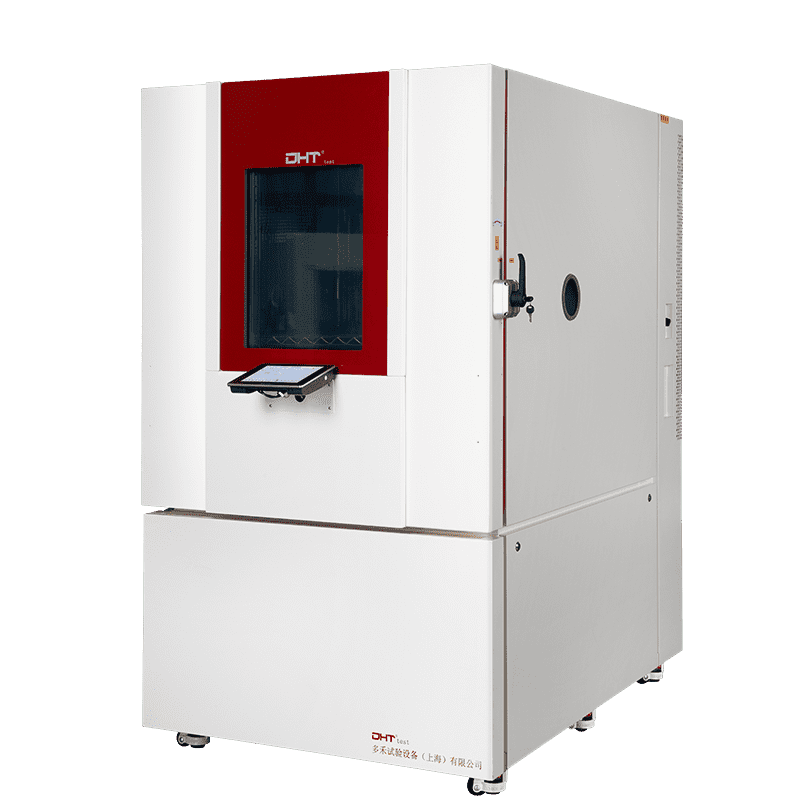I. Die Ingenieurkosten der Vernachlässigung: Von Präzisionsabweichung bis hin zu Systemausfällen
-
Materialermüdung: Wiederholte thermische Ausdehnung und Kontraktion von Türdichtungen führt zu Mikrorissen. Eine Lücke über 0,3 mm kann zu bis zu 10% thermischem Leckage führen.
-
Flüssigkeit Systemabbau: Abnehmende Phasenwechsel-Effizienz von Kühlmitteln verringert die thermischen Ramp-Raten. Wenn die realen Raten unter 80% der Nennwerte fallen, ist ein Eingreifen erforderlich.
-
Kontrolldrift: Die Pt100-Sensorgenauigkeit verschlechtert sich aufgrund angesammelten Metallstresses. Widerstandsänderungen über ±0,15°C erfordern sofortige Kalibrierung.
Gemäß MIL-STD-810G können nicht gewartete Systeme Abweichungen einführen, die echte Produktmängel verdecken.
II. Tägliche Wartung: Ihre erste Verteidigungslinie gegen thermische Instabilität
-
Pre-Run-Checkliste
-
Stromqualitätsversorgung: Sicherstellen, dass Drei-Phasen-Spannungsungleichgewicht ≤2%, gemäß IEEE 1159.
-
Kühlmittel Druck: Für LN2-unterstützte Systeme aufrechterhalten Sie 0,75 ± 0,05 MPa, um Phaseninstabilität zu verhindern.
-
Wasserqualität: Verwenden Sie deionisiertes Wasser mit einer Widerstandsfähigkeit von ≥1 MΩ·cm, um Kalkablagerungen in Elektrodenbefeuchtern zu verhindern.
-
-
Real-Time Überwachung
-
Temperatur-Ramping: Protokollieren Sie die tatsächliche Rampe-Kurve von -40°C bis +85°C und vergleichen Sie sie mit historischen Baselines.
-
Akustische und Vibrationsanalyse: Verwenden Sie tragbare FFT-Analysatoren, um Kompressoranomalien zu erkennen, mit Schwerpunkt auf 2-4 kHz Hochfrequenzkomponenten.
-
III. Monatliche Wartung: Gezielte Eingriffe zur Kontrollierung des Abbaus
-
Wärmeaustausch Systemdiagnostik
-
Kondensator Sauberkeit: Ein Anstieg um 15% im statischen Druck über Finnen erfordert Stickstoffreinigung. Luftstrom ≥300 CFM aufrechterhalten.
-
Kühlmittelpiping: Verwenden Sie Infrarot-Thermografie, um ΔT >5K zwischen Verdampfer- und Kondensatoroberflächen zu identifizieren, um mögliche Blockaden oder Lecks anzuzeigen.
-
-
Sensor- und Steuerungssystem-Überprüfung
-
Sensor Calibration: Führen Sie eine Drei-Punkte-Referenzkalibrierung bei -55°C, 0°C und 125°C durch. Kontrolle innerhalb IEC 60751 Klasse AA-Grenzen.
-
Kontrollgenauigkeitstest: Führt eine Schrittänderung von +25°C auf -40°C aus. Bestätigen Sie, dass PID-Overshoot unter 1,5% bleibt.
-
-
Dichtheitsprüfungen
-
Türdichtungs-Kompression: Verwenden Sie 0,1 mm Fühlerlehren, um mehrere Punkte zu testen. Dichtungen ersetzen, wenn das Leck >5m³/h beträgt.
-
Scharnier Preload-Inspektion: Verwenden Sie Drehmomentschlüssel, um eine Verriegelungskraft von ≥15 N·m sicherzustellen, um verformungsbedingte Lecks zu verhindern.
-
IV. Jährliche Überholung: Modellierung von Abnutzung und proaktive Komponentenersetzung
-
Vorbeugender Ersatz basierend auf MTBF
-
Feuchteelektroden: Nach 2000 Betriebsstunden reduziert Korrosion typischerweise die Befeuchtungseffizienz.
-
Kompressor Starter: Nach 100.000 Ein-/Aus-Zyklen wird ein Isolationsdurchbruch von Wicklungen wahrscheinlich.
-
Solid-State-Relais: Kontaktwiderstand erhöht sich nach 500.000 Zyklen, was zu Temperaturregelungsfehlern führt.
-
-
System-Level Präzision Wiederherstellung
-
Führen Sie eine 9-Punkt-Temperaturgleichförmigkeitskartierung durch, die auf NIST-Standards rückverfolgbar ist (laut AMS2750E-Protokoll).
-
Validieren Sie die Rampenrate-Linearität innerhalb ±10% über den Bereich von -40°C bis +85°C.
-
-
Verstärkung der Sicherheits-Barriere
-
Elektrisch Sicherheit: Erdungswiderstand sollte <0,1Ω sein, wie von IEC 61010-1 gefordert.
-
Strukturelle Integrität: Verwenden Sie Laserverformungssensoren, um Gehäusedeformationen zu erkennen. Struktur verstärken, wenn Verformung >2 mm beträgt.
-
V. Von SOPs zu einer Kultur der Zuverlässigkeit
-
Digital Wartung Protokolle: RFID-Tags binden, um automatisch alle Wartungsveranstaltungen für ISO 17025-Konformität zu protokollieren.
-
Kompetenzmatrix für das Personal: Betreiber müssen ISTA-zertifizierte Wartungskurse absolvieren.
-
Vorhersage Wartung Integration: Vibrationen- und Stromsignaturtrends verwenden, um dreistufige Warnschwellen festzulegen.
Fazit: Wartung ist die Grundlage der Genauigkeit
Häufig gestellte Fragen
Why is lifecycle maintenance important for Rapid Temperature Change Test Chambers?
Ohne strukturierte Wartung können Kammern innerhalb von drei Jahren bis zu 40 % ihrer kritischen Leistung verlieren, was zu Genauigkeitsabweichungen, höheren Kosten und potenzieller Verschleierung realer Produktfehler führt.
Was sind die wichtigsten täglichen und monatlichen Wartungsaufgaben für diese Kammern?
Daily tasks include checking power supply quality, coolant pressure, and water purity, as well as monitoring ramping curves and vibrations. Monthly tasks focus on condenser cleaning, refrigerant piping inspection, sensor calibration, and door seal integrity checks.
How often should components be replaced to ensure long-term reliability?
Eine präventive Wartung wird jährlich empfohlen: Feuchtigkeitselektroden nach 2.000 Betriebsstunden, Kompressorschalter nach 100.000 Zyklen und Solid-State-Relais nach 500.000 Zyklen, zusammen mit einer Präzisionsvalidierung auf Systemebene.


